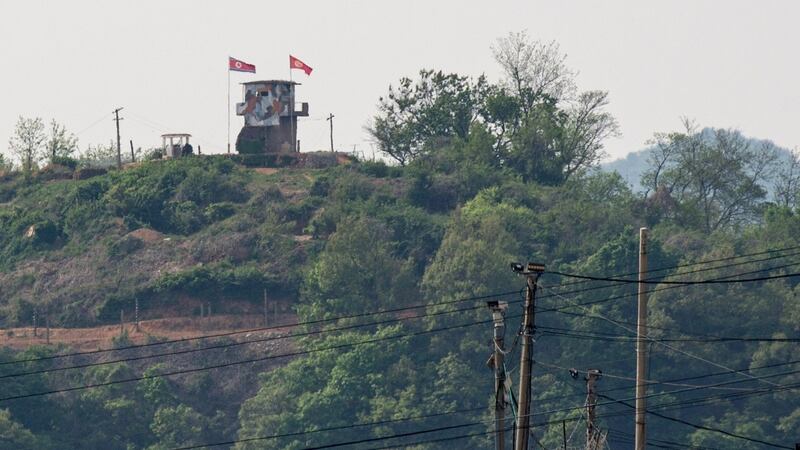Troops exchanged gunfire in a rare skirmish inside the demilitarised zone dividing the Korean peninsula just hours after Pyongyang released images of North Korean leader Kim Jong-un appearing in public for the first time in three weeks.
Multiple North Korean gunshots struck a South Korean guard post inside the 250km-long DMZ on Sunday morning, according to the South Korean Joint Chiefs of Staff. No casualties were reported. The South Korean side returned fire twice, the JCS said in a statement.
“We are taking actions via inter-Korean communication lines to grasp the situation and to prevent any further incidents. And we also maintain a necessary readiness posture,” the JCS said. Pyongyang has not commented on the incident.

US secretary of state Mike Pompeo told ABC's This Week: "We think [the shots] were accidental. South Korea did exchange fire. As far as we can tell there was no loss of life."
The exchange of fire follows weeks of speculation globally over the health and whereabouts of Mr Kim after the 36-year-old dictator disappeared from public view amid reports he was gravely ill.
North Korean state media on Saturday appeared to put such fears to rest when they released photographs and videos of Mr Kim at a fertiliser factory opening.
US president Donald Trump, who claims to have a good relationship with Mr Kim, retweeted a series of photographs of the North Korean leader at the factory, adding: "I, for one, am glad to see he is back, and well!"
While Mr Kim’s absence gave rise to global intrigue and concern over the potential for a power struggle inside the nuclear-armed pariah state, it also put the spotlight on how western intelligence has a limited understanding of the inner workings of the North Korean leadership.
Kim’s health
While many North Korean watchers said the images released on Saturday appeared to be real, some still urged caution over the potential for Pyongyang to use propaganda to obfuscate the true state of Mr Kim’s health.
Reacting to Sunday’s skirmish, the UN Command, which operates inside the DMZ, said it would investigate the incident to determine if there had been a violation of the Korean Armistice Agreement.
Go Myong-hyun, a research fellow at the Asan Institute for Policy Studies in Seoul, said he did not believe Sunday's gunfire was linked to Mr Kim's return nor was it a sign that Pyongyang was seeking to raise tensions.
"If North Korea wanted to make a show of strength, they would have done something much more major, like a missile test," Mr Go said.
Mr Go’s initial assessment was that the shooting was accidental. The South Korean response also appeared in line with the rules of engagement. North Korean military escalations were usually coupled with strongly worded statements from Pyongyang, he added.
Skirmishes inside the heavily fortified, 4km-wide DMZ are rare and considered dangerous as they risk provoking an escalation. But they are not unprecedented.
In November 2017, North Korean troops fired scores of rounds at one of their own soldiers as he dashed across the border to defect to the south. – Copyright The Financial Times Limited 2020
![Mike Pompeo: ‘We think [the shots] were accidental. South Korea did exchange fire. As far as we can tell there was no loss of life.’ Photograph: Nicholas Kamm/AFP via Getty Images](https://www.irishtimes.com/resizer/v2/7BJ7ZODFU4DVKKYJATWJ2BLTYM.jpg?auth=ef7d0b23384136d399e800edd36d89fa2a7bc3ef4a331522d33335b375d2bacc&smart=true&width=1024&height=576)








